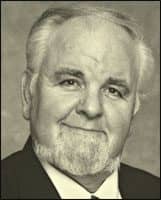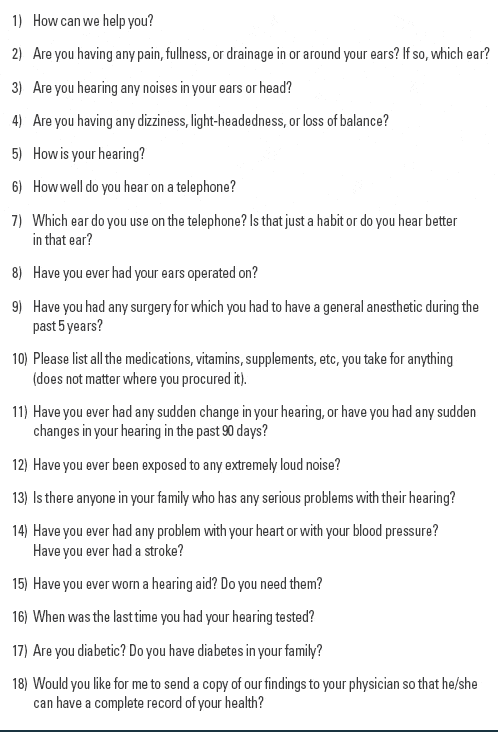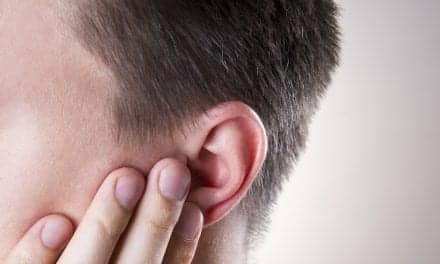The Patient History Form used in your office is a vital tool for screening patients for “red flags” that would warrant immediate referral to a physician. Additionally, it should provide you with a reasonable “first look” or estimation of the patient’s degree and slope/configuration of hearing loss, nature of the loss (conductive vs sensorineural), and its impact on the individual.
In a recent article1 in HR, I strongly endorsed the idea that, as hearing care professionals, we should constantly be asking ourselves, “Why am I doing this test for this patient, and why am I doing it in this order?” The main point was that, if your answer is “Because that’s the way I was taught to do it” or “That’s the way I’ve always done it,” then it is time to revisit your rationale and objectively determine if your approach is the correct one. Through our own experiences, we are constantly reminded that the definition of insanity is “Doing the same things you always did, the same way you always did them, and expecting different results.” We owe our patients, our practice, and our profession more.

|
| Jay B. McSpaden, PhD, CCC-A, BC-HIS, is an audiologist who retired from private practice and currently works part-time as a hearing instrument specialist in Jefferson, Ore. |
Toward a More Logical and Useful Patient History Process
One of the first things encountered by a new adult patient is your Patient History Form. Unlike the audiological test battery, which by comparison is a more straightforward regimen of procedures, the Patient History Form varies considerably from office to office based on how one prefers to gather appropriate information, uncover any red flags or auditory system pathology, and gain insights and understanding into the nature and impact of a patient’s hearing-related problems, if any.
As with the audiological battery of tests, the questions in your history-taking should have a logical and appropriate order so as to contribute to the gestalt of your and your staff’s hearing assessment. One should be aware that insurance companies have forms that vary and evolve; likewise, any practitioner has their own workflow when approaching and counseling patients. Therefore, the questions below are included here as “food for thought” in reassessing your current Patient History Form.
A Word About Other Useful Related Forms
Our practice relies on three forms related to patient history.
The first, the subject of this article, is the Patient History Form that covers the FDA’s required “red flags,” which warrant immediate referral to a medical professional, and is also designed to provide insights into the patient’s audiological history and other factors related to their hearing health.
The second is a longer form we call Taking a History in the Hearing Aid Office, which we use as a supplement to Patient History Form during the patient interview sessions. The patient does not see this form, as it is intended for staff only. The Taking a History in the Hearing Aid Office form includes not only the questions in the Patient History Form, but also the rationale for the questions. Thus, it serves to get our entire professional staff literally “on the same page” relative to the appropriate and necessary information required for proper hearing assessment. It is not so much a form as it is a directory of questions to be asked and the reasons for asking them, and much of this reasoning is outlined in the present article.
Several other questions could be added to the Patient History Form, and there is certainly nothing magical or sacrosanct about the one shown here. However, I am convinced that this form covers most of the critical questions that should be raised about a patient’s specific hearing complaints. It should be recognized that, in any such form, the questions are fairly generic, and too often generate generic answers. That’s why carefully reviewing the Patient History Form with the patient is critical; they will often fill in critical details they are less inclined to share on paper. Likewise, using any number of exceptional clinical tools (eg, Client Oriented Scale of Improvement, etc) in the latter stages of the initial interview and counseling process can also provide unique insights into patient needs, goals, expectations, and selection criteria.
The third form that we use (not covered in this article) is the short Patient Information Acquisition form. This covers the basics of the patient identification information, insurance information (if any), and other information that is critical for the history, as well as all the mandated “red flag” questions. At the bottom of this form, just above the signature of the patient or the patient’s guardian, is the statement: “I authorize the release of any information necessary to process this claim. I authorize the payment of medical benefits to the undersigned physician or supplier for services described above. I also recognize that I am responsible for any balance owed on my account.” This accomplishes several things. First, if there is insurance coverage, this signed statement is all that is needed. On the other hand, if third-party billing is not available, this signed statement is evidence of financial responsibility for the products and services rendered.
Taking a Case History in the Hearing Aid Office
The top segment of the Patient History Form describes the responsible party’s name, address, employer, home phone and work phone, Social Security number, and date of birth. It also includes a box that says: “In case of Emergency, please notify…” with a space for the name and number of their physician. Another space is reserved for the name of the referring physician to whom records can be sent.
Now, let’s go through the questions on the form and the rationale behind them.
QUESTION 1 How can we help you?
This is a prelude to the rest of the patient history: How do they perceive their problem, what brought them to you, and who sent them? Often, if the patient came on a referral, I will say, “Dr Smith wants me to test your hearing! Why does he want me to do that?” At this point, either you establish a viable working relationship with the patient or you “turn off” the patient. It is crucial that you convey sincere interest in what they have to say and that you really listen! If you have convinced them that you are really listening and are empathetic, then it is time to begin with the real first question.
QUESTION 2 Are you having any pain, fullness, or drainage in or around your ears? If so, which ear?
It is the fundamental question because the vast majority of problems of the ear, the auditory system, auditory processing, and its disorders are symptoms of otopathology. Pathologies that involve these symptoms are referred to a physician.
QUESTION 3 Are you hearing any noises in your ears or head?
There are a number of variations of the answer to this. “Ear noise” or tinnitus aurium is most commonly the perception of a peripheral tonal phenomenon occurring in the ear(s). Peripheral tinnitus is usually a cricket-type sound, which is really two puretones “beating against” each other. In some cases, the number of “chirps” is the difference between two tinnitus tones that are isolated to the ear. There is also a “clicking” type of tinnitus that is actually palatal myoclonus—a rapid spasm of the palatal (roof of the mouth) muscles, which results in clicking or popping in the ear.
Another type of tinnitus is “central” in origin, and these are generically called tinnitus cerebri. They include “head noise,” which is a broad-spectrum white noise or a pumping sound often in synchrony with the heartbeat. These types are sometimes associated with head trauma.
A third type of tinnitus is called “objective tinnitus,” which can actually be heard by the examiner or others. A brief overview2 on tinnitus for dispensing professionals, along with other articles on the subject, appears in the August 2007 HR.
QUESTION 4 Are you having any dizziness, light-headedness, or loss of balance?
The sub-question in the Taking a History in the Hearing Aid Office is “If you are walking down a flat surface, do you have to reach out and hold on so you won’t fall?” Other questions might be “Do you fall?” or “When you get these episodes, do you also get nausea?”
The rationale for Question 4 is that the cochlea and the vestibular mechanism are connected and share common fluids. In many instances, changes first occur in the vestibular system and are evidenced in the cochlea and/or exhibited as auditory behavior. Vertigo is the generic name for this disorder related to positional changes. This is not as important as is new or increasing evidence of staggering, falling, or the feeling of nausea accompanying these feelings.
Falls are a leading cause of death in the elderly. It should be apparent that symptoms of dizziness or vestibular pathology warrant referral to a medical professional along with a strong recommendation to visit someone who is an expert in vestibular rehabilitation.

FIGURE 1. Questions in the sample Patient History Form.
QUESTION 5 How is your hearing?
If they respond that they have any trouble with their hearing, I often ask them, “Do you mean that you have difficulty hearing people talk or that you don’t understand what they say?”
The goal is to understand the patient’s subjective impression of their hearing loss and hearing status. To most patients, all of their problems are “hearing problems.” True hearing problems imply a sensitivity shift that describes conductive pathologies. In the case of sensorineural pathology, these losses indicate either a sensory pathology (within the cochlea) or a central problem (within or on the brainstem, nerve, and brain).
QUESTION 6 How well do you hear on a telephone?
The rationale for this is that the telephone carries only the frequencies from 300 to 3000 Hz. If they have no difficulty hearing these frequencies but complain of hearing loss, then there is the possibility that there is a loss in the lower or higher frequencies. There is also a possibility of a central auditory processing disorder. The greater the difficulty one has in understanding speech over the phone, the greater the chance that you will uncover a sloping audiogram in the mid and/or upper frequencies.
QUESTION 7 Which ear do you use on the phone? Is that just a habit or do you hear better in that ear?
This question is based on the fact that the phone is primarily a “utilitarian device”; people tend to use the most efficient or better-hearing ear. However, if the hearing loss is minimal, people will use the left ear if they are required to write with the right hand. The worse their hearing gets, the more likely they are to use their “better ear.” When the admittedly poorer ear is used, there is another reason more important than the ease of hearing for the choice.
Time to get slightly tricky. At this point in the data-gathering process, as an apparently normal gesture, it is important to ask a question without any change in tone, rate, or announcement of intent with your hand or a pen in front of your mouth to obscure lip-reading. If the patient answers appropriately without any difficulty, then it’s likely that their hearing is largely within normal limits at least in the better ear. The volume of normal conversational speech is between 40 and 55 dBHL (60 to 75 dBSPL) for an adult male speaker at 6 to 10 feet. If you know that they perceive their hearing in each ear to be “essentially equal” and that at least one of their ears is “within normal limits,” then the configuration of at least the mid-portion of their audiogram should be fairly predictable.
QUESTION 8 Have you ever had your ears operated on?
It is important to know if there has ever been any surgical intervention in the ears. It is also important to know each of the effects of the surgeries that are possible on the ear. Finally, it is important to know the “audiometric” results of both the successes and failures of these surgeries.
QUESTION 9 Have you had any surgery for which you had to have a general anesthetic during the past 5 years?
This is a relatively new question that we ask. Anesthesia leaves the system and the bloodstream within 18 to 24 hours. However, in some cases, the mind-altering components within the anesthesia are fat soluble and are absorbed in the brain. This may produce an effect akin to “central auditory processing disorders” that are iatrogenic in etiology. They can also resemble dementia or trauma as one would exhibit in post-stroke recovery.
QUESTION 10 Please list ALL the medications, vitamins, supplements, etc, you take for anything (does not matter where you procured it).
This includes prescriptions, vitamins, supplements, birth control pills, over-the-counter drugs, pain relievers, cough medicines in any form, analgesics, and anesthetics. Also included are medicines for migraines, menstrual pain, muscle relaxants, etc—no matter where or how they were obtained. The reason for this listing is that many drugs in combination with other drugs can be ototoxic or have an ototoxic or vestibulotoxic effect.
It is important to learn the names of these drugs, write them down, and when you hear a new one, look it up in the Physicians’ Desk Reference (PDR). These volumes are published every year and sent free to physicians, pharmacists, and clinics around the country. It is not imperative to have a new one; a PDR that’s 1 to 4 years old will do nicely. When you hear of a new drug, look it up. Pay particular attention to anything relative to the ears, hearing, or the vestibular system in the parts that are devoted to “contraindications.”
QUESTION 11 Have you ever had any sudden change in your hearing, or have you had any sudden changes in your hearing in the past 90 days?
When you add the phrase “in the past 90 days?” it becomes one of the “red flag” questions. It is important to get this information because many “sudden” hearing losses can be reversed if the patient can see an otologist within 24 to 72 hours.
Sudden hearing losses are one of the few real “emergencies of the ear” that dispensing professionals may encounter, and this topic, as well as the various controversies surrounding treatment, was covered by Maurice Miller, PhD, the guest editor of the December 2003 edition of HR.2 While many incidences of sudden sensorineural hearing loss (SSNHL) remain a clinical enigma, some are caused by changes in blood flow through the arteries and capillaries of the cochlea.
In any case, there may be medications available to reverse the hearing loss or, in some cases, stop its progression. The patient should insist on immediate assistance from their physician, as well as an evaluation by an otologist-audiologist team.
QUESTION 12 Have you ever been exposed to any extremely loud noise?
In this question we are looking for evidence of acoustic trauma or exposure to extreme noise. This is particularly true in the case of someone with a large unilateral loss, or in a bilateral asymmetric loss in which one ear has substantially worse hearing than the other.
It is hard to imagine an event in which only one ear is present. Because of the relative uniformity of losses in most noise settings (some exceptions being gunshots, firecrackers, etc), I consider all unilateral sensorineural losses to involve the VIIIth cranial nerve until (or unless) they prove otherwise. You need to perform the procedures specific to the identification of VIIIth nerve lesions whenever you see someone with a serious unilateral difference. This is regulated by judgement in the presence of a serious story about the event in which one ear only was permanently damaged.
QUESTION 13 Is there anyone in your family who has any serious problems with their hearing?
The reason for this question is to look for a congenital or hereditary problem. For example, ossicular fixation (otosclerosis) tends to be more prevalent in the female side of the family. It is important to know which syndromes cause hearing problems. Some of these tend to run in families, and can even be associated with other debilitating and life-threatening problems.4
QUESTION 14 Have you ever had any problem with your heart or with your blood pressure? Have you ever had a stroke?
The reason for this question is to identify any kind of medical or surgical problem that might interfere with blood flow to and through the brain and/or ears (even in the absence of hearing loss). There may not have been a significant “sensitivity shift”; however, there may have been a shift in the processing abilities of information in the brain. It is possible that even mild sub-clinical strokes may cause problems in hearing processing.
QUESTION 15 Have you ever worn a hearing aid? Do you need them?
Here we are looking for any experience with amplification. If so, was it effective, and if not, why not? Attitudes about hearing aids affect people’s perceptions about them and about themselves. This question often “pre-qualifies” patients and reflects the patients’ own analysis of their situation. In many cases, patients have experimented with an amplifier or purchased a TV Ears system, proving to themselves that they need amplification.
Alternatively, with some patients, it is apparent from their “rueful” answers that they have decided that they need help, and they hope you can help them hear better. They are prepared to be told the truth if that confirms their analysis, and they will believe you if dealt with honestly.
QUESTION 16 When was the last time you had your hearing tested?
The reason for this question is that it is important to know if these records are available for comparison and who did the testing. If the testing was done fairly recently, you need to ask, “Why have you come to me?” Is this a second opinion, and do they doubt what they were told before?
QUESTION 17 Are you diabetic? Do you have diabetes in your family?
There is increasing evidence that long-term uncontrolled Type II diabetes can progress into Type I diabetes. It can even deteriorate into blood supply-related central auditory processing disorders including phonemic regression.
The rationale for identifying familial diabetes is that there is a high correlation between Type I diabetes mellitus and maternally inherited genetics. The size and blood supply of the capillaries in the ossicles are so fragile that any restriction in flow can cause necrosis on the tip of the incus or along the crura (arms) of the stapes. This can lead to middle-ear problems, as well as a blood sugar-related sensitivity shift (as much as 15 to 30 dB, fluctuating in the low frequencies).
QUESTION 18 Would you like for me to send a copy of our findings to your physician so that he/she can have a complete record of your health?
We automatically send the results if the patient was referred by the physician. However, if the patient was a self-referral or referred from someone else, we always ask. It lets the physician know that we asked, and we can then state, “We are sending it at the patient’s direction.”
This builds bridges to physicians—an important aspect of any practice. It also demonstrates your professionalism and your mutual concern for the patient. When you send these results accompanied by a professional letter, you have established the legitimacy of your place on the hearing health care delivery team.
Other Questions
There are many other questions that come to mind that may be important to ask. Your state may explicitly require some that are not included above. Some additional questions for consideration might include:
- Was your hearing loss sudden or gradual? If sudden, what were you doing just prior to it getting worse (eg, cancer treatment, illness, etc). If gradual, how long has it been getting worse?
- Do you have excessive ear wax or a need to clean your ears often?
- Do you have any allergies?
- Have you ever had a serious trauma or blow to the head?
- Do you regularly shoot firearms or come into contact with noisy powertools, explosions, machinery, etc?
- Have you served in the military?
The purpose of this article is not to make a “definitive” list of questions; rather, what is presented here is an “approach to questioning” and an “order” to those questions. This helps in your assessment, as well as the development of the patient’s understanding and perception of their own auditory system function. It is often amazing how accurate those perceptions are. What is frequently difficult is to interpret the language in which they tell you their symptoms and to interpret it so as to assist them in understanding their hearing problem. Most important, the knowledge of any physical symptoms of pain, tinnitus, vertigo, drainage, and “sudden hearing loss” is grounds for immediate referral to a physician.
Your Patient History Form should also allow you to construct a rough sketch of the audiogram and resulting speech test scores as you progress through the form. For example, a patient indicates that her hearing is approximately equal in both ears, and you saw no break in the pattern of her answers when she could not speech-read your question. Due to the fact that 100% discrimination scores for single-syllable words require that they be heard at least at threshold plus 25 dB (eg, based on the 1939 Articulation Gain Functions data by French and Stineberg), a fairly safe conclusion is that her hearing falls somewhere within normal limits through at least a portion of the “speech range” bilaterally.
If we add the information above to the information about telephone usage, we can construct a rough picture about her degree of loss, slope and configuration of loss, and some indication about the nature of her loss (conductive vs sensorineural). The slope information comes from the limits of the phone transmission, which is roughly 300 to 3000 Hz. If no difficulty is reported with the patient at any time over a telephone, but the patient still reports some difficulty understanding in the presence of noise, then it is likely that the problem is related to high frequencies above 3000 Hz. Your testing will probably confirm a sensorineural problem.
Of course, these are generalizations, and caution should be exercised. These same symptoms occur in the presence of central auditory processing disorders even in the absence of any hearing loss or sensitivity shift. If discrimination is affected, it is a safe bet that the 2000 Hz frequency is at least minimally affected (ie, in general, the greater the involvement of the 2000 Hz band in the hearing loss, the poorer the speech discrimination as a result of the steepness of the slope).
The point is to design a Patient History Form so you can start anticipating what might be expected from the patient report, and investigate fully those anomalies that provide a new window into the individual’s auditory challenges.
When patients understand what is wrong with their hearing, they can be very helpful in describing their difficulties and successfully following your recommendations relative to aural rehabilitation. When we begin to make measurements, any violation of the expectations based on observations in your patient history-taking warrants deeper investigation using all the audiological testing tools available.
CONTINUE READING Part 2 of this article
References
- McSpaden JB. Surprise! Hearing Review. 2010;17(4):54. Accessed August 23, 2010.
- McSpaden JB, McSpaden DK. A brief overview of tinnitus for dispensing professionals. Hearing Review. 2009;14(9):24-28. Accessed August 23, 2010.
- Miller MH. Sudden hearing loss: unique challenges and opportunities. Hearing Review. 2003;10(13):16-18. Accessed August 23, 2010.
- Miller MH, Schein J. Genetics and deafness: implications for education and life care of students with hearing loss. Hearing Review. 2010;17(4):38-42. Accessed August 23, 2010.
Citation for this article:
McSpaden JB. In-FORM-ation for better patient care. Hearing Review. 2010;17(10):14-24.
PART 2 of this article can be found at: https://hearingreview.com/2010/12/in-form-ation-for-better-patient-care-part-2-another-look-at-the-standard-audiogram-form





